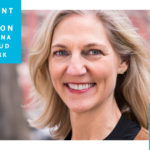A SOCAP Guest Post by By Amy Cortese, Founder & Editor, Locavesting
2017 will go down as the year that impact investing was democratized.
For starters, there was the JOBS Act, the Obama-era legislation that allowed everyday citizens to invest in small and local businesses. It will close out its first full calendar year with close to $55 million in capital raised to date for more than 177 ventures via small-dollar, crowdfunded investments.
Innovation bubbled up all over this year, as new models and products sought to harness pent up, grassroots demand. With so many pressing challenges, from a rapidly warming planet to massive inequality and racial injustice, it’s not a moment too soon!
Here’s a look back at seven stories we reported on at Locavesting over the past year that chart some of the notable innovations in impact investing that begin to tap into the wisdom and power of the community.
1. Innovators Face Challenges in Breaking Down Barriers to Capital for Underserved Entrepreneurs
Community-level innovators such as MORTAR in Cincinnati and Jessica Norwood’s Runway Project have received accolades for their work helping underserved entrepreneurs overcome systemic barriers. But these innovators are running up against obstacles of their own as they confront the limitations of conventional finance. “The traditional financial, philanthropic, and impact investing ecosystems are wholly deficient for supporting minority entrepreneurs,” says Rodney Foxworth, founder and CEO of Invested Impact in Baltimore (and the new executive director of the Business Alliance for Local Living Economies). This article by Sarah Trent details new financial instruments and other innovative approaches to solving the challenges that entrepreneurs of color face today.
2. As Regulation Crowdfunding Turns One, Progress For Women and Minority Entrepreneurs
Investment crowdfunding may be off to a slower start than some had hoped. But as the first full year of Regulation Crowdfunding drew to a close in May, the early data shows it is beginning to fulfill its promise of breaking down barriers to capital for a wide range of entrepreneurs. Women and minority-led ventures were more successful at meeting their crowdfunding goals than their white male peers. In particular, the success rate for women was 87.5%, compared to 41% for male teams. Minority-only founders, meanwhile, had a 46% success rate.
3. A Native American Brand Turns to Crowdfunding to Fulfill its Mission
Native American Natural Foods is the kind of social enterprise that impact investors dream about: A native American-owned company with a wildly successful product line—Tanka bars—that is helping to restore buffalo, and a way of life, to the Great Plains. But with success comes competition. Rivals cropped up with me-too products, often featuring Native American imagery. When a few were acquired by multinational food giants, Native American Natural Foods needed a war chest to fend off the new challengers. As it turns out, crowdfunding was a natural fit. The idea of shared ownership goes to the very heart of Native American culture, says cofounder & president Mark Tilsen. “It’s the basic structure by which tribal people have survived.”
4. Is it Time for State-Based Crowdfunding to Shine?
Since 2011, 34 states and the District of Columbia have passed their own mini-JOBS Acts that allow any business based in a state to raise capital from any resident of that state. The intrastate crowdfunding club spans states large and small, red and blue, sultry and snowy. What they share is a desire to help their homegrown businesses raise capital, create jobs and strengthen their local economies. This article looks at the advantages, and challenges, of the intrastate approach.
5. New Products Bring Impact Investing to the Masses
The $114 billion impact investment market has traditionally been the domain of foundations, institutions and wealthy individuals. That’s changing. “We’re at a tipping point,” says Dorrit Lowsen, chief operating officer & cofounder of the aptly named Change Finance, one of several new investment products to debut this year aimed at retail investors. “All the pieces of the puzzle are lining up.” Here’s a roundup of some of the recent introductions.
6. The Local Crowd: Building a Crowdfunding Ecosystem Across Rural America
Laramie, Wyoming may not be the first place you would look for an innovative experiment in digital age economic revitalization. And at first glance, Diane Wolverton and Kim Vincent might not fit the image of change agents. But with The Local Crowd, a hyper-local rewards-based platform, the pair has been quietly building a crowdfunding ecosystem across rural America that is helping communities lift themselves up by their own bootstraps. “We recognized and experienced firsthand the cry for more capital access,” says Wolverton.
7. Transform Finance: Bridging the Worlds of Finance and Social Justice
How can impact investors avoid unintended consequences and ensure that their investments are aligned with the goals and needs of the people and communities they seek to support? With impact investing on its way to becoming a trillion dollar market, it’s not a trivial question. And it’s one that has preoccupied Morgan Simon, the founder, among other things, of Transform Finance and author of the new book, Real Impact. Anne Field explores the guiding principles behind Transform Finance.

Amy Cortese at Fort Mason during SOCAP
Amy Cortese is the Founder and Editor of Locavesting, a media and educational site based on her 2011 book, Locavesting, The Revolution In Local Investing And How To Profit From It, which chronicled the local investing movement. She is an award-winning journalist, author and speaker whose recent work centers on the intersection of crowdfinance and community. She was formerly an editor at Business Week and a vice president at Wit Capital, an online investment bank. As an independent journalist, she’s been a frequent contributor to the New York Times and other publications. Most recently, she cofounded investibule, an aggregation platform for community-based investment offerings.



